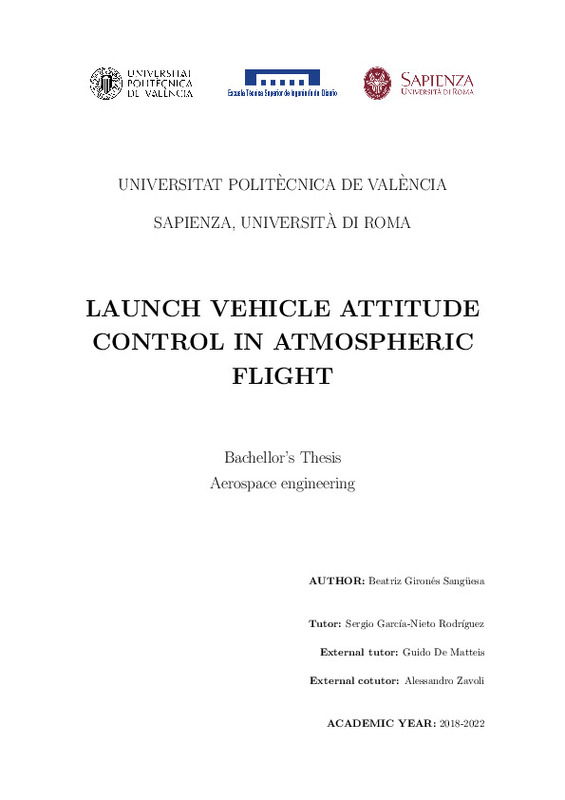JavaScript is disabled for your browser. Some features of this site may not work without it.
Buscar en RiuNet
Listar
Mi cuenta
Estadísticas
Ayuda RiuNet
Admin. UPV
Launch vehicle attitude control in atmospheric flight
Mostrar el registro completo del ítem
Gironés Sangüesa, B. (2022). Launch vehicle attitude control in atmospheric flight. Universitat Politècnica de València. http://hdl.handle.net/10251/185461
Por favor, use este identificador para citar o enlazar este ítem: http://hdl.handle.net/10251/185461
Ficheros en el ítem
Metadatos del ítem
| Título: | Launch vehicle attitude control in atmospheric flight | |||
| Otro titulo: |
|
|||
| Autor: | Gironés Sangüesa, Beatriz | |||
| Director(es): | de Matteis, Guido | |||
| Entidad UPV: |
|
|||
| Fecha acto/lectura: |
|
|||
| Resumen: |
[ES] La tesis se centra en el diseño de técnicas de control de vuelo para el control de actitud de un vehículo lanzador (LV) durante la fase atmosférica del vuelo.
Se persigue la estabilidad bajo unos márgenes que aseguren ...[+]
[EN] The thesis is focused on the design of flight control techniques for the attitude control of a launch vehicle (LV) during the atmospheric phase of flight.
Stability is pursued under some margins which ensures the ...[+]
|
|||
| Palabras clave: |
|
|||
| Derechos de uso: | Reserva de todos los derechos | |||
| Editorial: |
|
|||
| Titulación: |
|
|||
| Tipo: |
|
recommendations
Este ítem aparece en la(s) siguiente(s) colección(ones)
-
ETSID - Trabajos académicos [8906]
Escuela Técnica Superior de Ingeniería del Diseño







